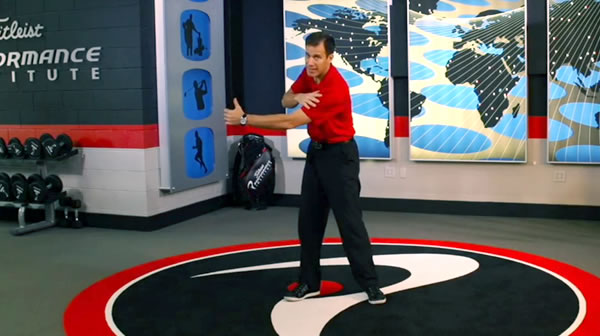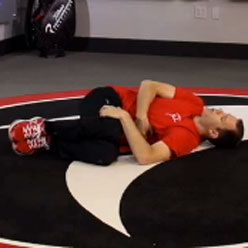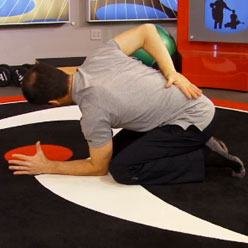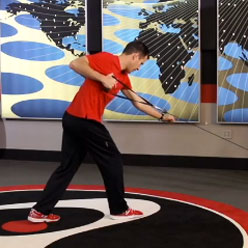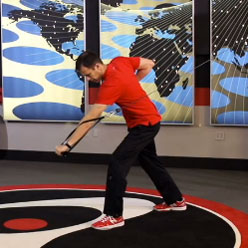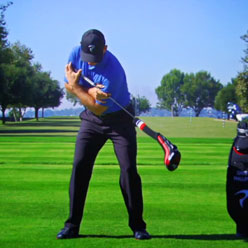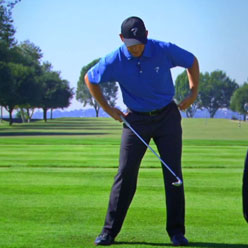Flat Shoulder Plane
Flat shoulder plane describes the plane of the shoulders as the student turns to the top of their backswing. At address the spine is tilted due to the setup position. In the ideal world the shoulders should move perpendicular to the tilt of the spine on the backswing. A flat shoulder plane is when the shoulders turn on a more horizontal plane than the axis of the original spine angle.
A flat shoulder turn can cause the club to be out of position on the backswing and creates a shift in swing planes on the downswing which reduces the efficiency of the motion. As a result the player will usually have to make compensations on the downswing with the body or hands to square the club face consistently. This can also cause a loss of power in the swing as well as inconsistent ball striking.
You can diagnose a flat shoulder plane from the target line view with your video camera or with your eyes. With the camera and the student swing in the setup position simply draw a line from the base of the tailbone to the back of the neck. Then draw another line just above the trailing shoulder and parallel to the spine angle line. Take the student to the top of the backswing and note if the lead shoulder is above the shoulder plane line. If the lead shoulder is above the line they have a flat shoulder plane.
The Body-Swing Connection™
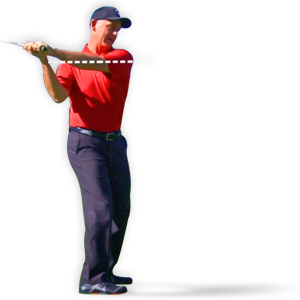
Physical Parameters Causing Flat Shoulder Plane and How to Diagnose Them:
In order to not flatten your shoulder plane during the golf swing several physical characteristics must be developed. First and foremost, the ability to separate your upper body from your lower body allows your shoulders to rotate around your spine without altering your original posture. Limited trunk to pelvis separation is usually caused by reduced spinal mobility and shortened lat flexibility. This separation is best be evaluated using the Seated Trunk Rotation Test, the Reach, Roll, and Lift Test, and the Lat (Shoulder Flexion) Test. Next, the ability to stabilize your spine angle during the swing is directly proportional to the strength and stability of your core musculature (your abs and glutes). When it comes to spinal stabilization the core is the king. These muscles help keep your trunk forward flexed throughout your golf swing. Core strength is best evaluated using the Pelvic Tilt Test, the Bridge w/ Leg Extension Test. Finally, in order to rotate around a stable posture one must have good flexibility in your hips and shoulders. This allows you to get the club into key positions without altering your spine angle. The overall flexibility of your hips and shoulders are best evaluated using the 90/90 Test, the Lat (Shoulder Flexion) Test and the Lower Quarter Rotation Test.
